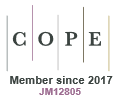RD25055Modelling menstruation in the common mouse: a narrative review
Modelling menstruation in animals that do not naturally menstruate is a challenge but not impossible. This review assesses the literature surrounding artificial menstruation in the common laboratory mouse. We noted that different models produce different menstruation-like events; the results highlight the importance of ovarian factors other than progesterone during menstruation. Researchers should select their chosen menstruation model carefully to ensure the model does not have negative impacts on the outcomes. Image created in BioRender, Rogers L (2025).
RD25055 Abstract | RD25055 Full Text | RD25055PDF (1.4 MB) Open Access Article




















